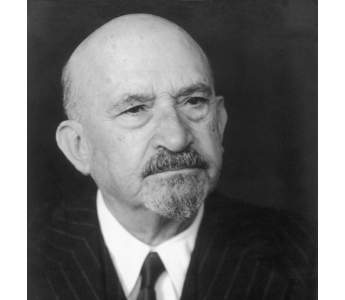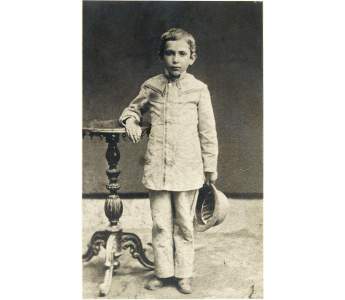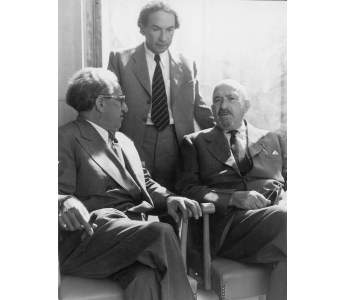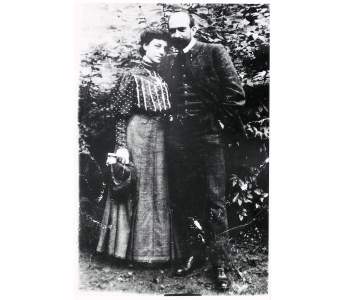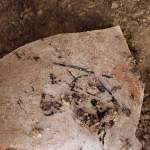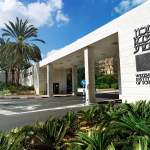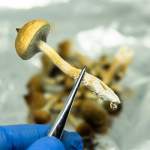Chaim Weizmann was born in 1874 to a traditional Jewish family in the small town of Motol in White Russia (Belarus). After graduating with honors from the Real-Gymnasium in Pinsk, he decided to establish himself professionally in order to be able to contribute to the development of science in the Land of Israel. He chose to study chemistry in Germany and Switzerland, where he would meet his future wife, Vera, who would become his partner in Zionist activity. In 1899 he was awarded a doctoral degree in organic chemistry by the University of Fribourg in Switzerland.
Deeply influenced by the views of Ahad Ha’am and Herzl, Weizmann became involved in Zionist activity, alongside Leo Motzkin, Nahman Syrkin, and Shmaryahu Levin. He felt that Judaism implied not merely religion but peoplehood. Possessing their own language, culture, and common historical memory, the Jewish people were entitled to return to their historical land and live there in safety.
Weizmann therefore rejected the idea that Uganda could replace the Land of Israel as a homeland for the Jews. At the same time, he began working as a scientist at the University of Manchester in England, a nation which he viewed as one of legal freedoms, moderation, and political realism.
In 1907, he visited the Land of Israel to see if industry could be developed there. Those were hard times for Jewish immigrants, who were working to cultivate the land while draining swamps and fighting malaria. That first visit strengthened his conviction that both political lobbying and settlement of the land were critical to the establishment of the State of Israel. This combined approach would later become known as “synthetic Zionism.”
Weizmann is known to have said during that time: “If everything is progressing so poorly, then the fault lies neither with the Land of Israel nor with the political situation, but solely with us!” Shortly afterward, he launched a campaign to explain the hardships and rights of the Jewish people.
Thanks to his determination and great personal charm, he met members of the British government and gained their good will. Afterwards, his invention of a new method of producing acetone from corn, which contributed to the British war effort in World War I, would add to his prestige and open new doors for him in the British cabinet. During those years he used to say: “Politics is the sense of smell, to predict what can – and what cannot – be achieved. One should demand only that which can be achieved.”
A skilled negotiator, Weizmann secured for himself the status of representative of a government in exile. That was how he obtained, with arduous effort, the coveted Balfour Declaration on November 2, 1917. In it, the British government recognized the right of the Jewish people to establish a national home in the Land of Israel. Weizmann: “We begin a new chapter. From now on, we – the Jews – will determine how the Declaration is to be translated into reality.”
As befits a scientist, Weizmann pursued his goals systematically, step by step. Once the declared right to the territory was obtained, he worked to strengthen and anchor it in reality.
He departed for the Land of Israel at the head of a delegation under British government auspices, and found the Jewish settlers engaged in the dynamic process of building and aliyah. Tel Aviv, the first Hebrew city, arose from the sands.
Understanding that Jews and Arabs would have to live together in the Land of Israel, Weizmann strove to create peaceful coexistence between the two peoples. Thus he met in Aqaba with Emir Faisal, leader of the Arab national movement. Faisal expressed sympathy for the Zionist cause, which he felt was similar to the Arabs’ national
aspirations.
In 1919, Weizmann and Faisal signed an agreement of cooperation between the two national movements, Jewish and Arab, for the development of the Land of Israel.
In 1921, Weizmann was elected President of the World Zionist Organization. He visited the United States and, together with Albert Einstein, undertook a fundraising campaign to advance the Zionist cause. In 1925, together with Lord Balfour, Weizmann inaugurated the Hebrew University of Jerusalem on Mount Scopus in Jerusalem. He said: “We must create a high culture, based on Jewish morality, and make it a center of human culture.”
Placing great emphasis on integrating science and industry, Weizmann promoted the establishment of advanced enterprises such as the phosphates plant at the Dead Sea and the hydroelectric power plant at Naharayim. However, despite renewed growth, the Jewish settlement was afflicted by an economic crisis. To overcome this crisis Weizmann established the Jewish Agency in 1929.
As a result of the bloody events of 1929, Lord Passfield, British Colonial Secretary at that time, who viewed the Arab riots as a natural defense against Jewish aliyah to the Land of Israel, published the White Paper in the name of the British government. England reneged on the promises made in the Balfour Declaration, and the Zionist endeavor fell upon trying times.
Following the Nazis’ rise to power in Germany, Weizmann dedicated himself to saving European Jewry. He was convinced that the Jewish people must stand by England in its struggle against the Germans, and promoted the formation of a Jewish Brigade. His two sons served in the British Army.
In 1942, as he was about to depart for a meeting with U.S. President Roosevelt, he received the bitter news that the airplane of his son Michael, a pilot in the Royal Air Force, had been shot down. His son was missing. Weizmann suppressed his mourning and proceeded with his mission.
Weizmann believed that only peace and neighborly relations could guarantee political and economic vigor. Thus he supported the partition of the Land of Israel into two states: Jewish and Arab. Turning to the Arab population in the land, he stated: “We do not build our national home at the expense of another nation. We wish to build Palestine with you, together.”
In 1947, Weizmann worked toward the acceptance of the United Nations resolution that would partition the land, insisting, however, on including the Negev within the area of the Jewish state. For this purpose, he met with U.S. President Harry S. Truman.Concurrent with his political activity, Weizmann was also devoted to his other great love: science.
In 1934, he established the Daniel Sieff Research Institute in Rehovot and served as its President following a contribution by Israel and Rebecca Sieff to commemorate their son. As Weizmann pursued his research in the lab, the Institute attracted first-rate scientists from around the world.
Vera and Chaim Weizmann built their house in Rehovot, near the Sieff Institute. Scientists, statesmen, and intellectuals from many nations visited the house. In 1949, on Weizmann’s 75th birthday, and with the blessing of the Sieff family, the Sieff Institute was renamed the Weizmann Institute of Science. The new Institute consisted of departments of mathematics, physics, chemistry, and life sciences.
Chaim Weizmann’s heritage, vision, and ideas are reflected today in every field of activity that characterizes modern Israel. His yearning for the expansion of knowledge found its expression in the establishment of prestigious institutions for research and higher learning. Israel’s advanced industry and technology have a great impact on the country’s standard of living and their products are highly acclaimed throughout the world.
Dr. Chaim Weizmann passed away on November 2, 1952, at the age of 78. In accordance with his wishes, he was buried on the estate of his home in Rehovot.
Few leaders have had the privilege of seeing their visions become reality in their lifetimes. Chaim Weizmann lived to see the establishment and the early success of the State of Israel, which continues to develop while granting its citizens, and citizens of the entire world, the hope for a brighter future.
Are you a journalist? Please sign up here for our press releases
Subscribe to our monthly newsletter:


















